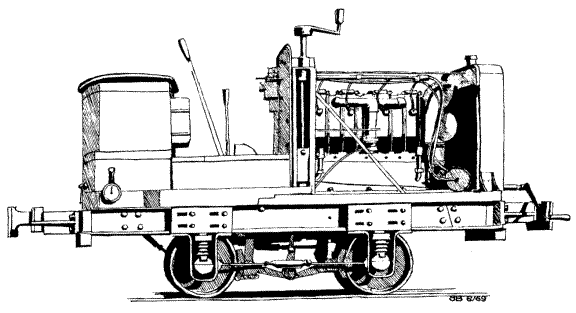
| THE INDUSTRIAL RAILWAY RECORD |
© FEBRUARY 1971 |
GASOLINE LOCOMOTIVES
FOR INDUSTRIAL RAILWAYS
SID BARNES
In 1910 the American Technical Society, Chicago, published their Cyclopedia of Automobile Engineering. With over two thousand engravings it is a massive work in four volumes, described as being a "General Reference Work on the Construction, Operation, and Care of Gasoline, Steam, and Electric Automobiles, Instruction in Driving, Commercial Vehicles, Motorcycles, Motor Boats, Aerial Vehicles, Self-Propelled Railway Cars, Etc" Understandably, the work is largely devoted to road vehicles, but at the end of Volume Ill there is a short section covering Self-Propelled Railway Cars of the following (authors’) descriptions Motor Velocipedes, Section Motor Cars, Inspection Cars, Locomotives for industrial or shop railways and Self-Propelled Single and Double Truck Passenger Coaches. It is the fourth group which is of interest to us: under the heading Gasoline Locomotives for Industrial Railways it reads as follows
"Most large industrial plants are provided with so-called industrial railways, these being narrow gauge tracks with light cars usually pushed by hand. These cars are used in transferring material of various kinds from one part of the works to another, and also used in such work as road building, excavating, hauling of cement, pig iron, coal, ashes, etc.

[My sketch] shows a gasoline locomotive designed to haul ten loaded cars (tonnage 25) at a speed of eight to twelve miles an hour. The locomotive shown is a type built by the Ernst Wiener Co., New York. The engine of this locomotive is a four cylinder, water cooled, four-cycle, gasoline engine, with cylinders cast in pairs and standing vertically. Ignition is of the storage battery and magnetic type, arranged for two sets of spark plugs. A radiator of the automobile type is at the front of the locomotive."